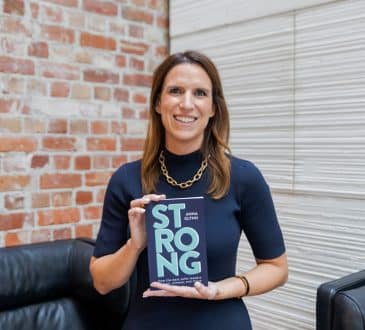Escaping the eye of the storm – Lessons in crisis management from the airline industry

There’s no skirting around it, the travel industry was among the hardest hit at the onset of COVID-19. According to International Air Transport Association, the global airline industry incurred net losses of $52bn in 2021 and is expected to lose an additional $12bn in 2022. The total number of passengers at Canadian airports dropped nearly 72% in 2020.
And for the Calgary Airport (YYC), in particular, 2020 passenger levels quickly declined to 1996 volumes — pushing the business to rapidly shift in the face of uncertainty to prepare for radical transformation. While a global pandemic wasn’t the first item on the list of potential scenarios, it certainly opened my eyes to what the future could hold and bolstered the importance of robust scenario planning and strategic foresight.
The crisis placed extraordinary demands on business leaders at a size and scale that nobody could have imagined. This month, we were fortunate to host Rob Palmer, Vice President, Commercial, Strategy & CFO of the Calgary Airport Authority, as part of the EY Business Revival Series to discuss crisis management in the airline industry. For the past five years, Rob has been leading YYC on financial strategy and project initiatives while guiding fiscal policies through the COVID-19 pandemic. Despite the challenges faced over the last two years, he’s committed to creating a positive and engaging airport experience for all passengers, aiming to have YYC set the standard of excellence across the industry.
Here are his takeaways and insights that any business can learn from in the face of adversity.
- Communication: One of the most vital factors when managing through the pandemic — or any period of rapid change — is communication. Your organization can have every plan in the world, but if it’s not correctly and transparently communicated, it could go to waste and never realize the total value. For YYC, this meant being brutally honest with all stakeholders, including employees, the government, and the board, in times of disruption. Rob adds, “while these are uncomfortable conversations, leading with openness and clearly defining the why can help build and enable the trust to make those quick, important decisions.”
- Competition: It’s essential to keep a pulse on what the competition is doing, reviewing best practices and benchmarking to set future goals. But Rob shares how the airport has also found inspiration by turning to other industries to spark new ideas and insights and validate what they’re thinking.
- Customer: The customer experience has been significantly altered as consumers increasingly expect businesses to prioritize their health and safety. Rob shares how “reviewing ways to digitize has helped YYC build out expanded options for contactless travel that enable better health and safety measures and create a seamless and integrated experience for customers.”
- Finance: COVID pressures forced airlines to cut costs in 2021 by almost -31% compared to pre-pandemic expense levels. In response, YYC rapidly deployed numerous initiatives to preserve as much money as possible while operating a safe and secure airport to address significant financial impacts. Priorities were placed on immediate actions that would provide both short-term relief and long-term resiliency by looking to improve cash position — through negotiating waivers, lease payment forgiveness and interest payment deferrals — and reducing overhead spend, such as deferring non-essential capital projects, reducing operating expenses and leveraging the limited available government assistance programs.
- Leadership: In times of crisis, there often is no playbook – it’s not about a predefined response plan but behaviours and mindsets that will prevent the organization from overreacting to developments yesterday, instead focusing on opportunities tomorrow. Rob adds, “having the ability to remain calm, be honest and optimistic is crucial to maintaining balance throughout the organization.” The pandemic has gone beyond work, impacting everyone’s personal lives. Leadership skills such as empathy, kindness, compassion and adaptability need to be the new norm.
- People: Global employment in the airline industry decreased by -15.6% in 2020 but stabilized in 2021. As we anticipate restrictions easing worldwide, YYC is reviewing its workforce strategy, actively bringing on new staff again to support expected upticks in demand. But this time, they’re looking to do things differently — strategically forecasting future roles and the complementary skillsets needed. And making sure their offerings are competitive to secure top talent includes building a solid culture, upgrading technology, and offering flexibility and competitive benefits so that people see the airport as an optimal place to work and grow their careers.
- Policy: Globally, governments have dolled out roughly $243bn in aid, ~41% was debt generating for members of the airline industry. While the Calgary airport had debt before the pandemic, the onset of COVID-19 made it increasingly clear that it wouldn’t be able to meet debt obligations. So, they took hold of the opportunity to accelerate plans to restructure debt, leading to a Canadian issuer’s largest inaugural bond offering, helping to secure investor confidence and enable growth in the future.
- Portfolio: In 2021, cargo made up 33% of airline revenue (typically 10-15%), and global trade was roughly $7.5tn (+15% from 2019). We’ve witnessed a significant uptick in cargo as a source of revenue among many airports to offset the decrease in passenger traffic. While some investments and partnerships have shifted to drive growth in non-passenger businesses helping to diversify the portfolio, YYC has remained true to its roots. Rob shares that “the airport has kept its focus on building a great customer experience and building resilience by becoming a lower-cost, attractive provider.”
Moments of crisis reveal a great deal about leaders, and in my experience, the best leaders take personal ownership in the eye of the storm. Despite the ongoing challenges throughout the pandemic, the Calgary Airport Authority has remained operational and succeeded where others in the industry failed. There’s much we can learn from their approach to build resiliency not only to weather the storm but come out sunnier on the other side.
Authored by Lance Mortlock (EY Canada Managing Partner, Energy & Haskayne School of Business Visiting Professor). Visit www.ey.com/en_ca/consulting/rapid-profit-transformation-rpt for more insights on how to unlock value, simplify the business, and create a more cost-effective organization for the future.
Have you read?
# Best CEOs In the World Of 2022.
# TOP Citizenship by Investment Programs, 2022.
# Top Residence by Investment Programs, 2022.
# Global Passport Ranking, 2022.
# The World’s Richest People (Top 100 Billionaires, 2022).
# Jamie Dimon: The World’s Most Powerful Banker.
Add CEOWORLD magazine to your Google News feed.
Follow CEOWORLD magazine headlines on: Google News, LinkedIn, Twitter, and Facebook.
This report/news/ranking/statistics has been prepared only for general guidance on matters of interest and does not constitute professional advice. You should not act upon the information contained in this publication without obtaining specific professional advice. No representation or warranty (express or implied) is given as to the accuracy or completeness of the information contained in this publication, and, to the extent permitted by law, CEOWORLD magazine does not accept or assume any liability, responsibility or duty of care for any consequences of you or anyone else acting, or refraining to act, in reliance on the information contained in this publication or for any decision based on it.
Copyright 2024 The CEOWORLD magazine. All rights reserved. This material (and any extract from it) must not be copied, redistributed or placed on any website, without CEOWORLD magazine' prior written consent. For media queries, please contact: info@ceoworld.biz
SUBSCRIBE NEWSLETTER








